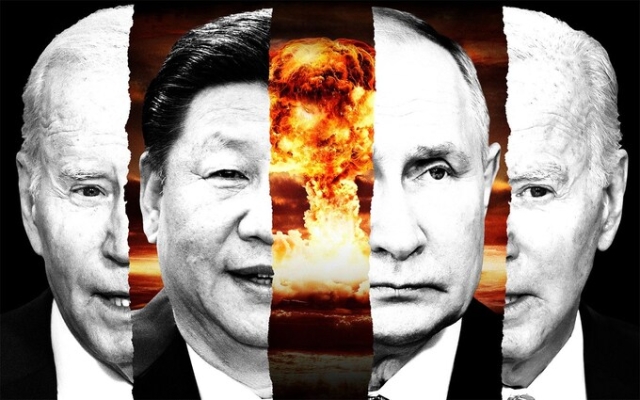
After decades of disarmament, we are at the dawn of a new era of nuclear weapons. Years of post-Cold War arsenal reductions have come to an abrupt end as China pours billions into new weapons and détente between Russia and the United States crumbles.
Russia has “suspended” participation in the New War. The New START arms treaty, which limits the number of strategic warheads that Moscow and Washington can keep ready for use. After the contract expires in 2026, its renewal is unlikely.
China refuses to negotiate at all and is rapidly increasing its nuclear arsenal. It now has more than 400 warheads, more than Britain or France. If Beijing continues to invest at its current rate, there will be 1,500 by the middle of the next decade.
Over time, there will be three nuclear superpowers, not just two. This will further complicate the geopolitics of these missiles and could embolden smaller powers.
Positions are changing, as we in Britain are reminded by the possible return of US nuclear weapons to our shores. America stores warheads in various allied countries, including Belgium, the Netherlands, Italy and Turkey: it withdrew its nuclear warheads from Britain after the Cold War, but public documents suggest they could soon return.
Air Force leaders have told Congress they want to invest in RAF Lakenheath in Suffolk for a «potential assurance mission» — a term commonly used in reference to nuclear weapons.
It can be argued that the war in Ukraine has raised tensions between Russia and the West to unprecedented levels — certainly the highest levels since the end of the Cold War.
Of course, there are those who say that the situation is different. worse than ever before. As of January, the famous «Doomsday Clock» operated by the Bulletin of the Atomic Scientists reads «90 seconds to midnight,» the closest thing to nuclear armageddon ever. The end of civilization has never been closer than it is now, according to nuclear scientists.
How can Britain and the West protect themselves?
Who's stocking up?
The spread is definitely a concern. The five original nuclear powers—the United States, Russia, Britain, France, and China—have been joined in recent decades by four more: India, Pakistan, North Korea, and, widely believed, Israel.
There are always concerns that Iran could gain new capabilities from its nuclear power program, while Saudi Arabia is now pushing for similar technology as part of negotiations with the US to recognize the state of Israel.
Renewed attention to the importance of nuclear power energy in the net zero era means concerns are likely to grow.
However, it is important to note that weapons proliferation is not actually necessarily or inevitably linked to nuclear power. It is true that most of the world's weapons are made from plutonium produced in reactors. However, the vast majority of the more than 30 countries with civil nuclear power programs do not have weapons. Two of the nine countries with nuclear weapons—Israel and North Korea—have weapons but no power plants.
Fear of nuclear weapons is not a good reason for not having nuclear power, and just because a country may be pursuing a nuclear power program does not mean it will also acquire weapons. In fact, the odds are against it. The Non-Proliferation Treaty and the International Atomic Energy Agency (IAEA) are effective in most cases.
In terms of the number of weapons, the situation is not as bad as it could be. Nuclear weapons peaked in 1986, when there were just over 70,000 warheads in the world's arsenals. Today there are about 12,000 of them. The United States has 1,744 warheads actually ready for use, and Russia has 1,588.
When nuclear weapons were first invented, there was only one way to use them: simply drop a nuclear weapon from a heavy bomber over a target. Both the United States and Russia continue to operate heavy bombers designed to deliver nuclear weapons.
However, this method of attack is relatively easy to defend against: the bomber can be shot down by fighters or anti-aircraft missiles before it arrives.
The reason people think that nuclear war will trigger the inevitable end of the world is the Intercontinental Ballistic Missile (ICBM). Many believe that ICBMs cannot be stopped: hence the idea that once they fly, Armageddon cannot be prevented.  Intercontinental ballistic missiles such as the US Minuteman III are widely considered unstoppable. Photo: US Air Force
Intercontinental ballistic missiles such as the US Minuteman III are widely considered unstoppable. Photo: US Air Force
Classic intercontinental ballistic missiles are stored in buried, heavily fortified silos. Even a powerful enemy nuclear warhead must strike close to a fortified silo to disable it. The alternative is to place the ICBM on a mobile vehicle or railcar, meaning it will be more difficult for an adversary to know where it is and target it with its own nuclear warheads.
Both the hardened silos and the mobile launchers were an attempt to deal with a terrible dilemma of the early Cold War: the fear that a US president or Soviet premier might have only minutes to warn of enemy ICBM launches before they struck.< /p>< p>If the incoming preemptive strike were directed against his own nuclear weapons in a «counterforce» style, he would have to order a counterstrike within minutes or he would lose the ability to do so.
Alarming. , there was always the possibility that the attack warning was a mistake. Such false alarms have been a real problem, and the idea of »launch on warning» remains deeply frightening.
Fortified silos, which could only be disabled if hit by multiple nuclear warheads, were an attempt to maintain the ability to retaliate. blow even after the attack.
The grim logic of a pre-emptive counterforce strike was one of them. The reason why the opposing superpowers built such huge arsenals of weapons. One way to maintain the ability to retaliate even after an enemy attack is to simply have more nuclear weapons than the enemy can destroy at one time.
However, the United States has found a way around this dynamic: satellite navigation. The ubiquitous «satellite navigation» found in every modern phone, every modern car and many other things was originally developed as a way to make nuclear missiles more accurate.
The United States has begun launching a global positioning system. (GPS) satellites 1978. With the help of GPS, a US warhead could hit the target almost directly on target and reliably disable even a protected silo. In a “counterforce” war, one US warhead was now worth several Soviet ones.
In the year of the launch of GPS, the Soviet Union surpassed the United States in the number of warheads. However, the US did not bother to increase its arsenal: indeed, the number of warheads in the US fell slightly in the 1980s, although the Soviet stockpile grew significantly. America fought smart, not hard.
Submarine Safety
At that time, another development occurred that made nuclear war much less likely: the advent of the nuclear-armed ballistic missile submarine, known as the SSBN.
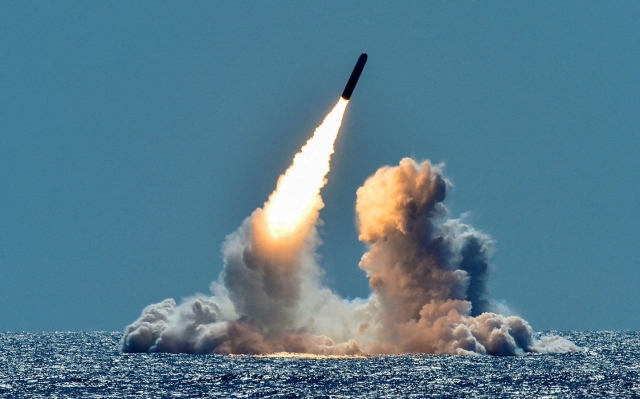 Submarine missiles form the nuclear triad — the main delivery systems for nuclear weapons. Photo: REUTERS
Submarine missiles form the nuclear triad — the main delivery systems for nuclear weapons. Photo: REUTERS
Unlike traditionally powered submarines, nuclear-powered vessels can remain submerged for months. A nuclear submarine produces its own fresh water and air: the only real limits to its endurance are the crew's food supply and the need for maintenance. A properly designed and carefully operated nuclear submarine that never seeks contact with the enemy is virtually impossible to detect.
No one could know where the other side's missile submarines were. No matter how destructive the first strike is, the SSBNs will remain. No prime minister will ever need to do a “launch on warning”. Even if the warning was correct and the strike was indeed approaching, his subordinates could deliver a crushing response even days or weeks later.
There was no way to destroy enemy submarines, so no one was crazy enough to attempt a first strike . It is quite possible that the world was saved by nuclear-armed submarines.
These three main delivery systems for strategic nuclear weapons—bombers, ground-launched intercontinental ballistic missiles, and submarine-launched missiles (SLBMs)—are often referred to as the “nuclear triad.” The idea that all three are needed justifies the large budgets and large numbers of US Air Force personnel.
Other countries, less well-funded, see a fairly obvious reality: if you have operational submarines, you don't need the other two parts of the triad.
Britain never got around to acquiring any land. ICBMs and abandoned their V-force heavy nuclear bombers as soon as they had submarines. France, for its part, also has a force of SSBNs, allowing it to keep one at sea at all times. It has wisely gotten rid of its land-based intercontinental ballistic missiles and similarly does not have heavy bombers.
The idea of getting rid of intercontinental ballistic missiles (or not having them at all, like the UK) has other reasons than simply saving large sums of money.
It is ground-based intercontinental ballistic missiles that lead to the idea of a counterforce strike, which implies the need to use a huge number of weapons. Worse, it is ground-launched ICBMs that create the terrifying “launch on warning” scenario. Land-launched intercontinental ballistic missiles are not only pointless if you have SSBNs, but they are actively and needlessly dangerous things.
Former US Secretary of Defense William Perry pointed this out. In 2016, he wrote an op-ed in the New York Times suggesting that the US should not replace the current Minuteman III ICBM. Unfortunately, Perry's idea did not gain traction.
Next Generation Weapons
As is often the case in nuclear strategy, the ideas are usually old, but the actions are sometimes new.
Let's look at ballistics. protection. The idea of stopping the flight of ballistic missiles has always existed, but initially did not receive much support because of the Cold War agreement, the Anti-Ballistic Missile Treaty, which placed severe restrictions on ballistic missile defense efforts.
However, the US withdrew from the treaty in 2002 and has since built several small missile defense systems. These include the ground-based Midcourse Defense (GMD) interceptor and the naval SM-3 missile, designed to intercept warheads in space, as well as final defense capabilities such as THAAD, SM-6 and the famous Patriot missile, which are designed to stop warheads plunging into the atmosphere.
 The THAAD interceptor is designed to stop missiles in flight. Photo: REUTERS
The THAAD interceptor is designed to stop missiles in flight. Photo: REUTERS
Now Vladimir Putin and Xi Jinping are developing weapons that can bypass ballistic protection. In particular, both China and Russia are working on “hypersonic” warheads. Their names are confusing: the word «hypersonic» usually means something that travels at speeds greater than Mach 5. Existing ICBM warheads already fly at Mach 20 when they descend at the end of their flight.
But a typical ballistic warhead flies very high above the Earth before descending, perhaps as high as 2,000 km—much higher than low-orbit satellites. This means that it can be seen from a very long distance and gives time for interception.
Missile trajectories by type
The new Avangard hypersonic warhead, which Putin claims is already in Russian service, is launched on a conventional constellation of intercontinental ballistic missiles but does not fly high into space. Instead, it chooses a lower, faster trajectory and plunges into the atmosphere much earlier, completing most of its journey in hypersonic glide. This is not a new idea: back in the 1960s it was called «accelerated planning», but then it never caught on.
Hypersonic missiles do not allow such a large payload to be delivered on a given missile, which is why normal ballistics became the standard. However, the lower flight path means that the warhead only appears on radar at the end of the flight, rather than at the very beginning. It immediately becomes much more difficult to intercept.
GMD and SM-3 do not operate in the atmosphere, meaning that the only possible defense is terminal interceptors such as Patriot, THAAD and SM-6. The fact that a hypersonic warhead spends most of its flight in the atmosphere means it can potentially maneuver and change course significantly, making it difficult to predict where it will fly and encounter an interceptor along the way.
China has also tested hypersonics and combined it with another old but largely untapped idea: fractional orbital bombardment.
Here, the rocket acts as a space launch system rather than launching its payload in a high ballistic arc. As soon as it exits the atmosphere, it flips over and accelerates to tremendous speed, placing the warhead into a low satellite-like orbit.
When the warhead approaches the target — or in the case of the 2021 Chinese test, when it reaches the start of its hypersonic glide — it uses the rocket's thrust to slow down and deorbit.
Partial orbital flight is extremely fast and can reach anywhere on Earth, potentially arriving from a completely unexpected direction, such as the south pole. Again, it doesn't deliver as much payload for a given missile, but a low-flying warhead can't be detected until it's almost there, and the point at which it deorbits is unpredictable.
However, the US already has a cure for partial orbital operation: the naval SM-3 rocket can easily reach low orbital altitudes, and indeed, a US cruiser used the SM-3 to shoot down a faulty spy satellite in 2008. The trick would be to know that the fractional orbital weapon was approaching and there was a warship in its path.
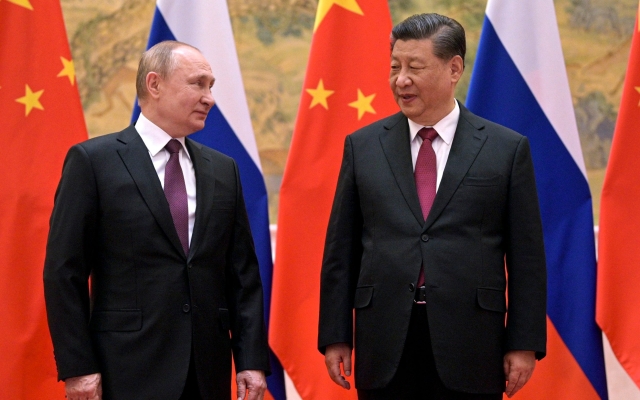 Putin and Xi have said they are developing the next generation of hypersonic missiles. Photo: Alexey Druzhinin, Sputnik, Kremlin. Photo of the pool. via access point
Putin and Xi have said they are developing the next generation of hypersonic missiles. Photo: Alexey Druzhinin, Sputnik, Kremlin. Photo of the pool. via access point
There are reasons to suspect that the superweapon of Putin and Xi Jinping is not such a superweapon as it might seem. And we must also remember that modern Chinese and Russian hypersonic, shotgun and other weapons are designed to penetrate US defenses that largely do not exist.
Russia, the USA, and now China are spending huge amounts of money. on ground-launched intercontinental ballistic missiles, exotic superweapons, and missile defense. Some of them might actually be useful, perhaps in a conventional war rather than a nuclear one, as was the case with the American Patriot in Ukraine.
But ground-based ICBMs are a bad idea. The US should join its Western nuclear allies and focus on submarines. The US would save so much money by jettisoning its ICBMs that it could do almost anything.
Once this is done, practical Western defenses that can stop various types of missiles will make sense mainly in non-nuclear scenarios: for example, protecting aircraft carriers and other conventional forces in the Pacific.
Missile defense that could to counter attacks from minor powers such as North Korea is also practical and affordable. Another advantage of current defense systems is that they have already caused Vladimir Putin and Xi Jinping to panic and spend huge amounts of money.
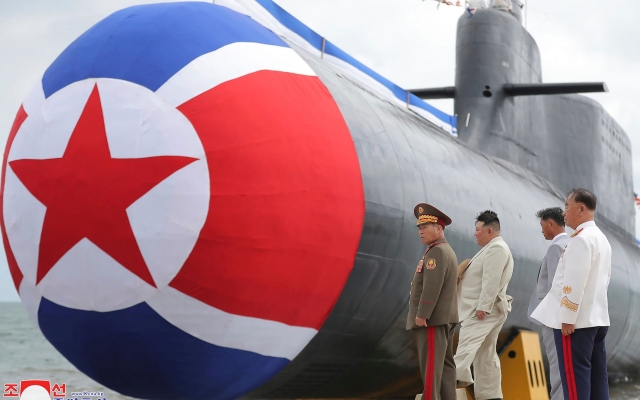 North Korea is among the countries that threaten nuclear war. Photo: KCNA via KNS
North Korea is among the countries that threaten nuclear war. Photo: KCNA via KNS
However, the temptation to waste vital resources on huge stockpiles of warheads, huge missile fleets and impenetrable defenses must be resisted. As with GPS satellite navigation, the United States and its allies must strive to fight smart, not hard, in the emerging new era of 21st century nuclear competition.
Armageddon or amnesty?
How worried should we be then? about the Doomsday Clock ticking closer to midnight?
The Board of Sponsors of the Bulletin of the Atomic Scientists, which sets the clock, was founded in December 1948 by none other than Albert Einstein and J. Robert Oppenheimer.< /p>
But the hands of the Doomsday Clock are not set by the Council of Sponsors, but by another council. It has 18 members and does not include nuclear scientists. Three have degrees in political science, one is a lawyer and former Democratic governor of California.
Three served in the Obama administration; not in any Republican administration. Only six of the 18 Clock installers have any training in physics or engineering, and only one of them can be called a «nuclear scientist»: Alexander Glazer, whose career was entirely devoted to nuclear disarmament. Several other clock-setting past or current disarmament campaigners.
The Bulletin of the Atomic Scientists is an organization working for nuclear disarmament, although it prefers to say that it simply provides information about nuclear weapons.
The same can be said of similar organizations such as the Federation of American Scientists, the Union of Concerned Scientists and the British American Security Information Council.
None of these organizations have any influence in Russia, China, India, Pakistan or North Korea, and they are not trying to create it. In essence, they are left-wing fighters for Western nuclear disarmament. (Sometimes almost incoherently on the left: for example, the Union of Concerned Scientists considers nuclear weapons «racist.»)
The «scientists» and their not-so-subtle campaign have completely failed to convince the Western public that their governments should disarm unilaterally. Obviously, as long as others have nuclear weapons, we must have ours.
Of course, it is also clear that no one wants to see mistakes made with nuclear weapons because there are too many of them, or for nuclear weapons to spread to more countries than they already have. In this sense, we can all agree with the anti-nuclear «scientists».
But the idea that we are approaching Armageddon requires more careful examination.
Yes, the War in Ukraine means that tensions between the US and Russia have reached levels as high as they have been in decades.
However, it can also be said that the Vietnam War was a very similar situation: one superpower actively and unsuccessfully fought on the ground, while the other supplied weapons and secretly aided its opponents.
And while Russia and China quickly is arming itself with seemingly new technologies such as hypersonic missiles. All this does is to maintain a balance of terror that has prevented nuclear war — or perhaps a horrendous conventional all-out war between the superpowers — for 60 years.
There are other ways in which nuclear weapons can save us from Armageddon.
In 2010, the US National Research Council warned that nuclear weapons are the only practical means of protecting planet Earth from a major asteroid strike like the one that could wipe out humanity, and one day it is inevitable that it will happen if we ever Let's disarm.
Today's picture of nuclear weapons does not necessarily mean that we are approaching midnight — even if the landscape is changing under our feet.







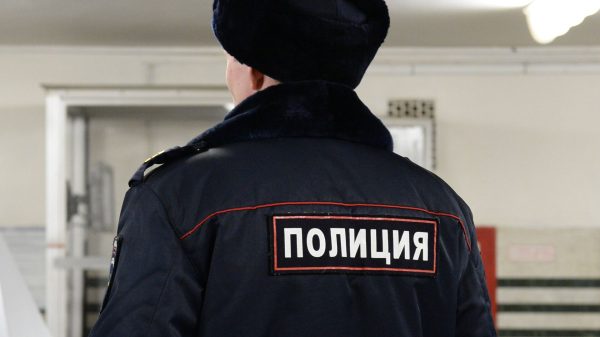
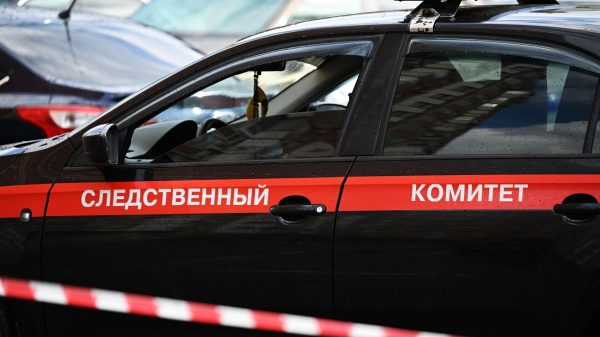









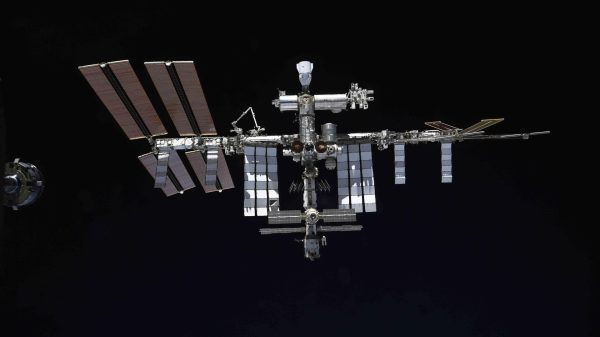















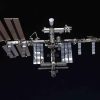























Свежие комментарии